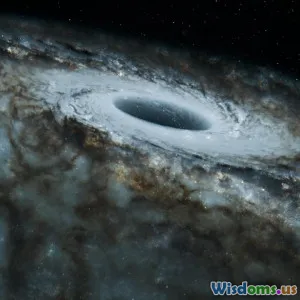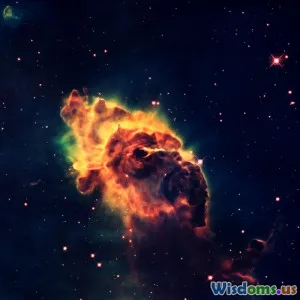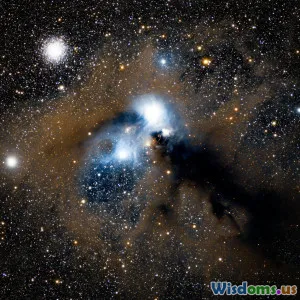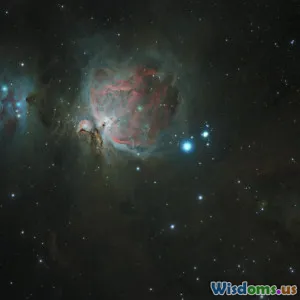
Understanding Black Holes
6 min read Dive into the mysterious world of black holes and discover their formation, characteristics, and impact on the universe. (0 Reviews)
Understanding Black Holes
Black holes have long captured the imagination of scientists and the public alike. These enigmatic regions of space, where gravity is so strong that nothing—not even light—can escape, challenge our understanding of physics and the universe. In this article, we will explore the formation, types, and characteristics of black holes, along with their implications for astrophysics and cosmology.
What is a Black Hole?
A black hole is defined as a region in space where the gravitational pull is so intense that nothing can escape from it. This extreme gravity occurs because a substantial amount of mass is compressed into a very small area. The boundary surrounding a black hole is known as the event horizon. Once anything crosses this threshold, it cannot return.
Formation of Black Holes
Black holes can form through several processes:
-
Stellar Collapse: The most common type of black hole, known as a stellar black hole, forms when a massive star exhausts its nuclear fuel. Without the outward pressure from nuclear fusion to counteract gravity, the star collapses under its own weight, resulting in a black hole.
-
Supermassive Black Holes: These giants, found at the centers of most galaxies (including our Milky Way), can have masses equivalent to millions or even billions of suns. Their exact formation process is still a subject of research, but they may arise from the merging of smaller black holes or from the collapse of massive gas clouds in the early universe.
-
Primordial Black Holes: This hypothetical type could have formed in the very early universe due to density fluctuations shortly after the Big Bang. While their existence remains unproven, they could provide insights into the nature of dark matter.
Types of Black Holes
Black holes can be categorized into several types based on their mass:
- Stellar Black Holes: Ranging from about 5 to several tens of solar masses, formed from collapsing stars.
- Supermassive Black Holes: Millions to billions of solar masses, located at galaxy centers.
- Intermediate Black Holes: These are theorized to exist with masses between stellar and supermassive black holes, although few candidates have been identified.
- Primordial Black Holes: Hypothetical black holes formed in the early universe, potentially very small in size.
The Nature of Black Holes
Event Horizon
The event horizon is the point of no return. For observers outside this boundary, a black hole appears to freeze time for an object falling in due to the intense gravitational effects. This leads to the phenomenon known as gravitational time dilation, where time slows down relative to an outside observer.
Singularity
At the core of a black hole lies the singularity, a point where density becomes infinite and the laws of physics as we know them cease to function. This paradox challenges our understanding of the universe, as general relativity and quantum mechanics clash in this extreme environment.
The Role of Black Holes in the Universe
Black holes play a crucial role in the evolution of galaxies and cosmic structures. They can influence star formation rates and the dynamics of galaxies. For instance, the supermassive black hole at the center of the Milky Way, known as Sagittarius A*, is believed to regulate the orbits of stars in its vicinity, contributing to the galaxy's overall structure.
Moreover, black holes emit powerful jets of particles at nearly the speed of light, known as quasars when they are actively consuming matter. These jets can affect surrounding gas and dust, influencing star formation in nearby regions.
Conclusion
Understanding black holes is essential for grasping the fundamental workings of the universe. They challenge our definitions of time, space, and gravity, and they continue to be a rich area of research within astrophysics. As we delve deeper into their mysteries, black holes may yet reveal secrets that reshape our understanding of the cosmos.
As technology advances, particularly in observational tools like the Event Horizon Telescope, we are on the brink of unlocking even more of the secrets that black holes hold. The journey to unravel their mysteries is just beginning, and it promises to be an exciting frontier in our exploration of the universe.
Rate the Post
User Reviews
Popular Posts





















